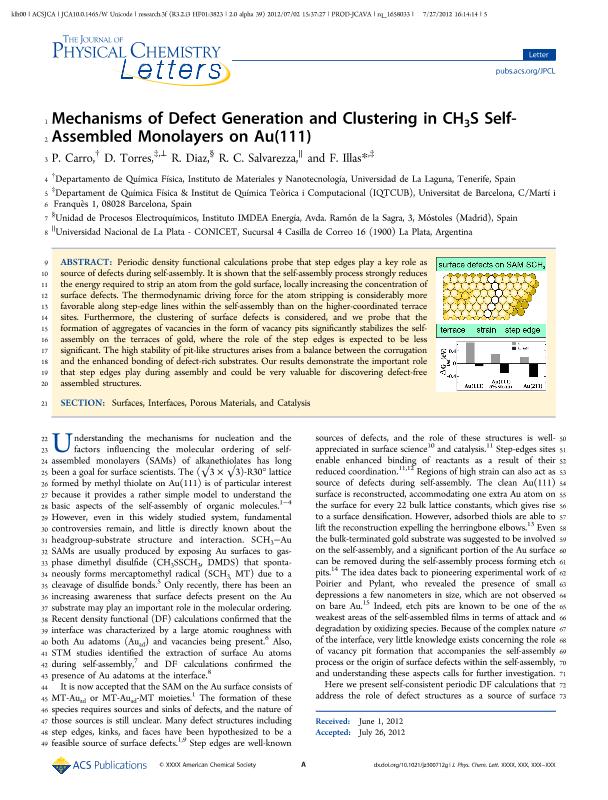Artículo
Mechanisms of defect generation and clustering in CH 3S Self-assembled monolayers on Au(111)
Fecha de publicación:
08/2012
Editorial:
American Chemical Society
Revista:
Journal of Physical Chemistry Letters
ISSN:
1948-7185
Idioma:
Inglés
Tipo de recurso:
Artículo publicado
Clasificación temática:
Resumen
Periodic density functional calculations probe that step edges play a key role as source of defects during self-assembly. It is shown that the self-assembly process strongly reduces the energy required to strip an atom from the gold surface, locally increasing the concentration of surface defects. The thermodynamic driving force for the atom stripping is considerably more favorable along step-edge lines within the self-assembly than on the higher-coordinated terrace sites. Furthermore, the clustering of surface defects is considered, and we probe that the formation of aggregates of vacancies in the form of vacancy pits significantly stabilizes the self-assembly on the terraces of gold, where the role of the step edges is expected to be less significant. The high stability of pit-like structures arises from a balance between the corrugation and the enhanced bonding of defect-rich substrates. Our results demonstrate the important role that step edges play during assembly and could be very valuable for discovering defect-free assembled structures.
Archivos asociados
Licencia
Identificadores
Colecciones
Articulos(INIFTA)
Articulos de INST.DE INV.FISICOQUIMICAS TEORICAS Y APLIC.
Articulos de INST.DE INV.FISICOQUIMICAS TEORICAS Y APLIC.
Citación
Carro, P.; Torres, D.; Diaz, R.; Salvarezza, Roberto Carlos; Illas, F.; Mechanisms of defect generation and clustering in CH 3S Self-assembled monolayers on Au(111); American Chemical Society; Journal of Physical Chemistry Letters; 3; 16; 8-2012; 2159-2163
Compartir
Altmétricas




